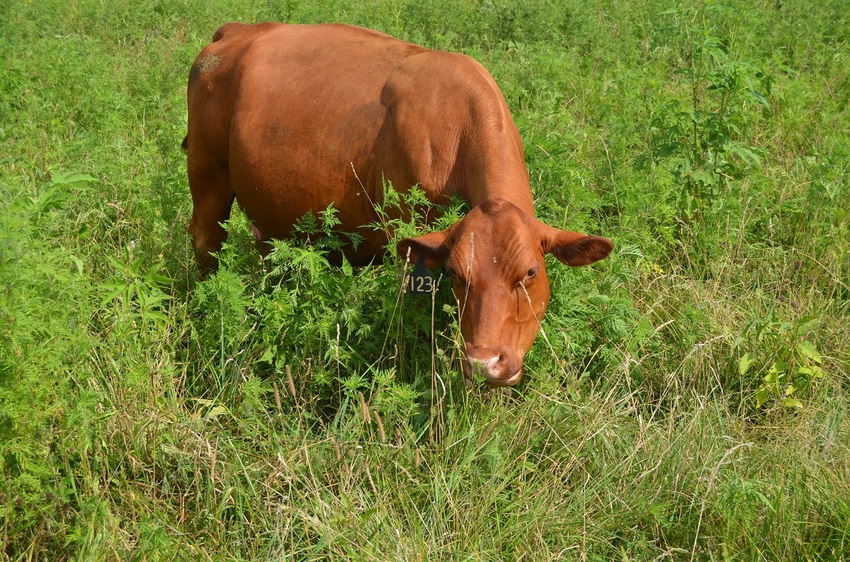
Over the past decade or more Alan Newport, Walt Davis, and myself have addressed cow efficiency on a regular basis. Burke Teichert’s thoughts and recommendations in BEEF magazine parallel what we have been more than strongly suggesting.
I've put forth here a non-exhaustive review of what I think we should be seeking in a cow:
High fertility. Cows should get pregnant as soon as they start to gain weight and condition. Eighty days or thereabout.
Good feet and legs.
Small udder with milk production peaking at 1 to 1.5 gallons daily.
Small frame score (No. 2 or less).
Excellent temperament.
Longevity: 12- to 14-year-old cows most likely have all the right traits.
Calving after four weeks grazing grass that has strength.
Feminine, with long necks.
Small loin area with big barrel.
Zero doctoring.
You can eliminate a bunch of wrecks, expense and headaches by including a yearling program and closing the herd to outside influences. For years I advised most of my clients to purchase their cows as 4- to 5-year-olds and sell all their calves. This is still a good idea for the majority but they are not bound for improvement and high profitability.
Using a couple of 3-year-old bulls along with a group of yearling bulls on a hundred cows will eliminate trich and most other venereal diseases in a few years.
Think about this: A $5,000, 16-month-old bull that settles 25 cows annually for four years costs $50 per pregnancy up front. He costs twice as much to keep as an 800-pound cow (a minimum of $250-$500) on an annual basis. Hopefully everything goes right but folks it ain’t a perfect world. He likely comes from a different ecosystem, is not acclimated to your management style, and likely will not improve your bottom line. When he makes his last trip to town, he likely brings $800.
A case in point: We made a road trip to the Dakotas and Montana mid-June 2018. I have never been received with more friendliness and hospitality. But Chester Meyer who ranches 60 miles south of Baker, Montana, was really loading my boat about production cost and especially bulls. We failed to agree on several fine points but I blamed much of that on my lack of communication skills. Meyer has been around for four decades and has learned and applied most of the natural model principles. He said that he had owned his last high-dollar fancy bull. I liked his cattle a lot.
Years ago I read about a producer who said that steer calves were a byproduct of a good cattle operation. The same is true of cows that are slow or non-breeders, and heifers that don’t fit the ticket. They are all byproducts of breeding, management and keeping cattle that work efficiently on our land.
Don’t forget that small cows and longevity are the ticket. Cattle from as little as 40 miles (or less) down the road might likely take 18 months to acclimate and the truth is they just might not acclimate.
About the Author(s)
You May Also Like






